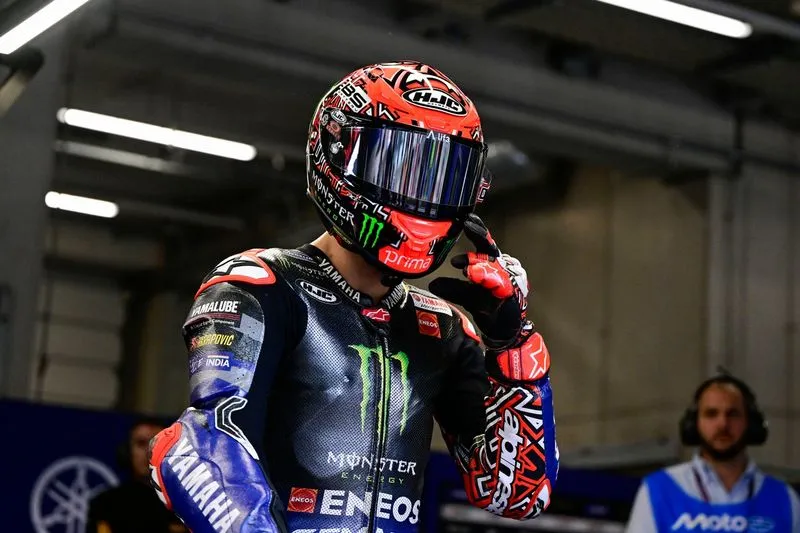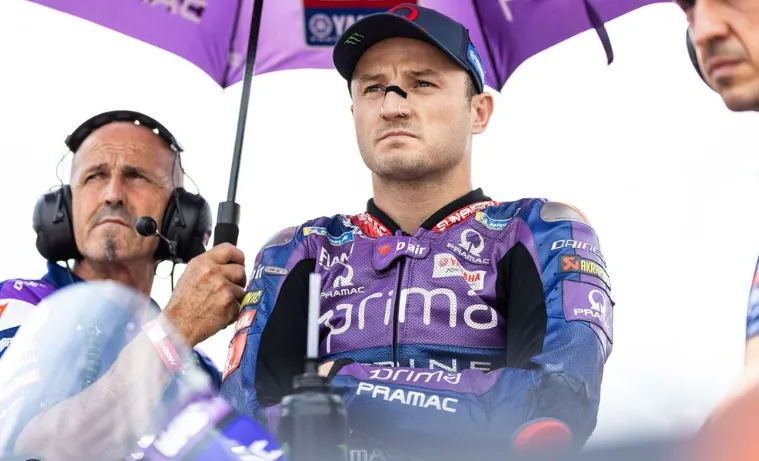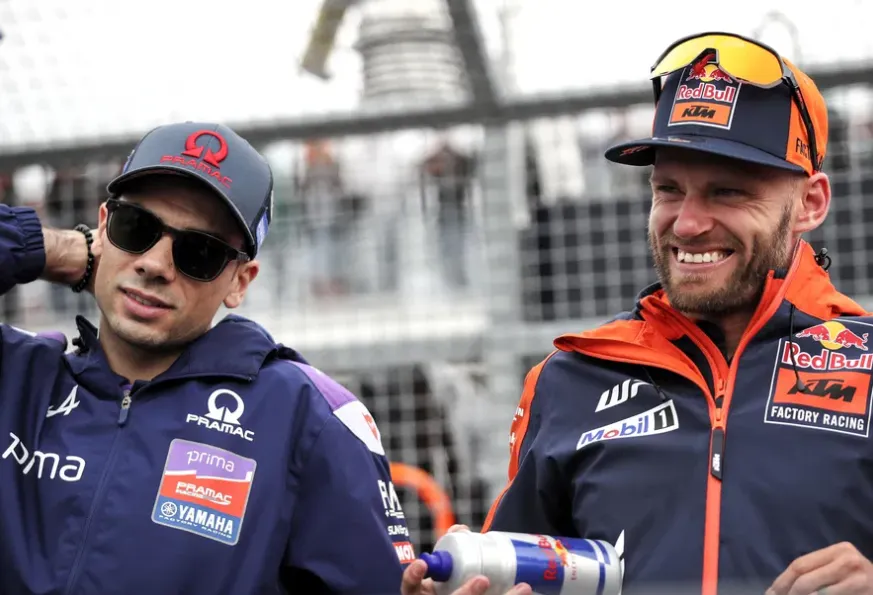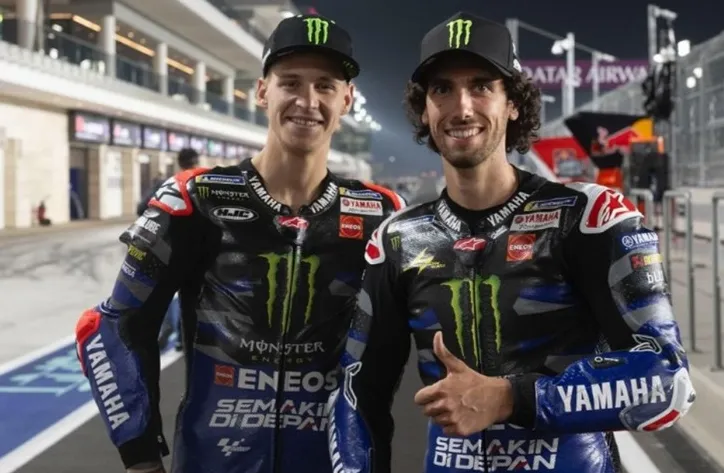

Fabio Quartararo’s ‘Body Language’ Forced Yamaha to Rethink Their MotoGP Engine Plan
The pressure at Yamaha has been building throughout the 2025 MotoGP season, and now it appears that the situation has reached a breaking point. Former world champion Fabio Quartararo has grown visibly frustrated with Yamaha’s lack of progress, and in a twist of high-stakes team management, his own body language may have forced the Japanese manufacturer to make a major technical decision earlier than planned.
A Promising Start Fades Away
The Frenchman’s season has been a rollercoaster. While Fabio Quartararo has demonstrated his raw speed on the YZR-M1, including four pole positions this season — three of them back-to-back from Jerez to Silverstone — the results have rarely matched his qualifying pace. The heartbreaking DNF at the British Grand Prix, caused by a ride height device failure while he was in a commanding position, summed up Yamaha’s ongoing struggles.
Out of those four poles, Quartararo managed to convert just one into a podium, finishing second at Jerez. That race stands as the only real high point in an otherwise challenging season. Since then, Yamaha’s performance has dropped off dramatically. Their last true fight at the front of the grid came at Silverstone, while the Ducati machines continued to dominate nearly every track they visited.
A fourth-place finish at Sachsenring offered a brief glimmer of hope, but it turned out to be an outlier rather than the start of a resurgence. The next races only added to the frustration: 15th place at the Red Bull Ring, finishing more than 25 seconds behind winner Marc Marquez, and a 10th-place finish at Balaton Park, still 15 seconds adrift of the leader.

These results left Quartararo increasingly despondent, and internally, Yamaha management began to acknowledge that their approach was not working. According to Yamaha’s own Paolo Pavesio, the team simply isn’t where it needs to be, a sentiment that paved the way for a major rethink of their technical strategy.
Quartararo’s Body Language Sends a Message
According to MotoGP journalist Neil Morrison, the tipping point may not have been the results alone but rather Quartararo’s body language. Speaking on the Paddock Pass Podcast, Morrison highlighted how the Frenchman’s demeanor had shifted dramatically over the past two to three months.
“I mean, the start of the year was mixed, then we got back to Europe and there was this big surge in positivity,” Morrison explained. “Fabio Quartararo had that run of three amazing pole positions on the bounce, nearly won the British Grand Prix, and it seemed like: ‘Wow, Yamaha really could be back.’”
But as the season progressed, the optimism faded. “The momentum of the inline-4 project really seems to have just fizzled out in the last couple of rounds,” Morrison continued. “I think Fabio’s only had two top sixes since the British Grand Prix when things went awry so spectacularly. And just his body language in the last two-three months has been quite negative, defeated you could even say.”
That sense of defeat, visible even in how Quartararo carried himself in the garage and on track, did not go unnoticed. “I feel that Yamaha in some way senses this and senses that he needs a bit of a G-up, and I think that this is maybe one of the strategies behind bringing this forward,” Morrison concluded.
Yamaha Accelerates the V4 Project
For years, Yamaha has remained loyal to its traditional inline-4 engine philosophy, even as rivals like Ducati, KTM, and Aprilia pushed forward with V4-powered machines that consistently delivered superior straight-line speed and broader performance windows. The plan had been to introduce a new V4 engine in 2026, allowing engineers enough time to refine the concept before rolling it out in competition.
But Quartararo’s visible frustration, combined with the team’s alarming dip in form, changed everything. Yamaha have now decided to fast-track the V4 project. Test rider Augusto Fernandez will make a wildcard appearance at Misano next weekend, giving Yamaha their first competitive read on the machine months earlier than expected.
This move is not without risk. Early feedback suggests that the prototype V4 is currently slower than the existing M1 package — a predictable issue for a new platform in its infancy — but Yamaha believe that bringing it to the track now will both accelerate development and signal to Quartararo that the factory is listening and adapting.

The Contract Clock Is Ticking
Yamaha’s decision to move aggressively on the engine project isn’t just about winning races — it’s about keeping their star rider. Quartararo is under contract until 2026, but patience is wearing thin. His public comments after Balaton Park hinted at doubts about whether Yamaha’s resources and internal structure are truly capable of competing at the highest level.
The stakes are enormous. Quartararo has already indicated privately that if Yamaha’s V4 package isn’t competitive in the final two or three races of 2026, he will explore other options. This ultimatum is not idle talk — several factories would gladly rearrange their rosters to accommodate a former world champion in his prime.
In fact, Ducati are already understood to view Quartararo as their preferred option for 2027. With Francesco Bagnaia reportedly struggling on the GP25 compared to teammate Marc Marquez, Ducati are exploring contingency plans, and Quartararo’s availability could be the perfect solution. However, politics within MotoGP could complicate such a move. Dorna, the sport’s governing body, reportedly believes it is “essential” to have a world champion at every factory team, a view that would put pressure on Yamaha to retain Quartararo at all costs.
A Critical Year Ahead
The next 18 months will define Yamaha’s trajectory for years to come. Their ability to deliver a competitive V4 engine could determine not only their championship prospects but also whether they can hold onto the rider who brought them their most recent world title.
For Quartararo, the situation is equally pivotal. He has made no secret of his desire to fight for championships, not merely podiums. If Yamaha cannot provide the machinery to make that happen, his future loyalty is not guaranteed.
Bringing the V4 project forward is both a technical and psychological maneuver — a message to Quartararo that his concerns are being addressed and that Yamaha is willing to break tradition for the sake of progress. But in the unforgiving world of MotoGP, intent counts for little without results.
If the new engine performs, Yamaha could revive their status as a championship contender and cement Quartararo’s place as the team’s centerpiece. If it fails, the Frenchman’s departure could mark the beginning of a deeper crisis for the once-dominant Japanese manufacturer.
One thing is certain: Fabio Quartararo’s body language has already changed the future of Yamaha’s MotoGP project. Whether that change leads to resurgence or regret will be revealed on the track in the months ahead.


















